
1802年James Thomson_The Seasons- 詹姆斯•汤姆生著名长诗《四季》铜版画插图本第一版 全皮装 珍贵早期善本 精美铜版画
¥ 2360 九品
仅1件
作者James Thomson (詹姆斯•汤姆生)
出版社London: printed for C. Whittingham
出版时间1802
版次1
印刷时间1802
印次1
印数0.1千册
装帧精装
上书时间2017-04-13
- 在售商品 暂无
- 平均发货时间 21小时
- 好评率 暂无
- 店主推荐
- 最新上架
商品详情
- 品相描述:九品
- 主要缺陷:书脊虽然为后世重装, 但也因为年代太久而显得斑驳老旧, 书脊两端及边角部分有磨损,然而全书装桢紧致,内页保存相当完美。
- 商品描述
-
802年James Thomson_The Seasons- 詹姆斯•汤姆生著名长诗《四季》铜版画插图本第一版 全皮装 珍贵早期善本 精美铜版画
开本大小(长*宽*厚度):22厘米x 15.3厘米x 3厘米 (68 + 242页)
装桢:小牛皮烫金精装;原品铜版画插图7张, 另外附上一张单张的作者肖像铜版画原品。
品相:9品。
主要缺陷:书脊虽然为后世重装, 但也因为年代太久而显得斑驳老旧, 书脊两端及边角部分有磨损,然而全书装桢紧致,内页保存相当完美。
更多图片请见 (请将下面地址复制并粘贴在浏览器地址栏中,然后再回车即可)
http://photo.163.com/wangyongqiang_71@126/#m=1&aid=309513108&p=1
18世纪英国诗人汤姆生(James Thomson)的著名长诗《四季》是饮誉音乐界的一首千古名作,在这首长诗的影响和改编下,后世出现了多部伟大的音乐作品包括:清唱剧《四季》(海顿作品);柴科夫斯基钢琴套曲钢琴套曲《四季》和当今最著名的威瓦尔蒂的《四季》。
James Thomson的《四季》原文节奏感极强,令神思在有韵无韵中飞扬。可惜,这部伟大作品,至今仍然没有中文译本。
另外本书还收录了汤姆生(James Thomson)的另一部著名长诗《逍遥宫》(Castle of Indolence) 。
对于诗人汤姆生,大文豪萨缪尔•约翰逊推崇备至,把他列入诗人评传中,并撰写了他的生平传记。
另外一个特别崇拜汤姆生的杰出艺术家就是大家熟知的透纳:《汤姆森的风弦琴》(Thomson’s Aeolian Harp)是透纳所作最有洛兰绘画神韵的作品,由里士满山鸟瞰泰晤士河特威肯翰河段(Twickenham),并引用了两位诗人的作品。这两位诗人是亚历山大·蒲柏(Alexander Pope,1688~1744)和詹姆斯·汤姆森(James Thomson,1700~1748),都曾寓居此地。在早期的一些画展中,透纳在皇家美术学院的展览目录中为自己的作品添上了摘引自文学作品的标题,其中许多来自汤姆森的诗作。有时,他也会加上自己写的诗句,从而使作品意义更为丰富,就像这幅创作于1809年的《汤姆森的风弦琴》。此后的40年中,他一直沿用这一方法,尤其是透纳,常被认为是不善言辞的人。后人或许可以从透纳布满诗稿的日记中猜度他这样做的意图,他力图区分诗人与画家的不同角色。在透纳的很多杰作中,或多或少都能感觉到汤姆森的诗意。
著作简介
The Seasons,
by James Thomson,
with His Life, by Mr. Murdoch, an Essay on the Plan and Manner of the Poem, by J. Aiken, M.D. and a Complete Glossary and Index.
----------------
James Thomson
----------------
London: printed for C. Whittingham, Dean Street, Fetter Lane, for G. and J. Robinson; R. Baldwin; F. and C. Rivington; W. J. and J. Richardson; Vernor and Hood; T. Payne; W. Lowndes; G. Wilkie; Ogilvy and Son, J. Scatcherd; J. Walker; C. Law; J. Nunn; Longman and Rees; Cadell and Davis; Carpenter and Co; T. Hurst; Black and Parry; and B. Crosby (1802)
----------------
[维基百科]
James Thomson (11 September 1700 – 27 August 1748) was a Scottishpoet and playwright, known for his masterpiece The Seasons and the lyrics of Rule, Britannia!.
Scotland, 1700–1725[edit]
James Thomson was born in Ednam in Roxburghshire around 11 September 1700 and baptised on 15 September.[1] The fourth of nine children of Thomas Thomson and Beatrix Thomson (née Trotter).[2] Beatrix Thomson was born in Fogo, Berwickshire and was a distant relation of the house ofHume. Thomas Thomson was the Presbyterian minister of Ednam until eight weeks after Thomson’s birth, when he was admitted as minister ofSouthdean, where Thomson spent most of his early years.[3]
Thomson may have attended the parish school of Southdean before going to the grammar school in Jedburgh in 1712. He failed to distinguish himself there. Shiels, his earliest biographer, writes: 'far from appearing to possess a sprightly genius, [Thomson] was considered by his schoolmaster, and those which directed his education, as being really without a common share of parts'.[4] He was, however, encouraged to write poetry by Robert Riccaltoun (1691–1769), a farmer, poet and Presbyterian minister; and Sir William Bennet (d. 1729), a whiglaird who was a patron of Allan Ramsay.[3] While some early poems by Thomson survive, he burned most of them on New Year’s Day each year.[5]
Thomson entered the College of Edinburgh in autumn 1715, destined for the Presbyterian ministry. At Edinburgh he studied metaphysics, Logic, Ethics, Greek, Latin and Natural Philosophy. He completed his arts course in 1719 but chose not to graduate, instead entering Divinity Hall to become a minister.[6] In 1716 Thomas Thomson died, with local legend saying that he was killed whilst performing an exorcism.[3] At Edinburgh Thomson became a member of the Grotesque Club, a literary group, and he met his lifelong friend David Mallet. After the successful publication of some of his poems in the ‘’Edinburgh Miscellany’’ Thomson followed Mallet toLondon in February 1725 in an effort to publish his verse.[3]
James Thomson, fromSamuel Johnson's Lives of the English Poets (c.1779)
London, 1725–1727[edit]
In London, Thomson became a tutor to the son of Charles Hamilton, Lord Binning, through connections on his mother’s side of the family. Through David Mallet, by 1724 a published poet, Thomson met the great English poets of the day including Richard Savage, Aaron Hill and Alexander Pope.[3] Thomson’s mother died on 12 May 1725, around the time of his writing ‘Winter’, the first poem of ‘‘The Seasons’’. ‘Winter’ was first published in 1726 by John Millian, with a second edition being released (with revisions, additions and a preface) later the same year.
By 1727, Thomson was working on Summer, published in February, and was working atWatt’s Academy, a school for young gentlemen and a bastion of Newtonian science. In the same year Millian published a poem by Thomson titled ‘A Poem to the Memory of Sir Isaac Newton’ (who had died in March). Leaving Watt’s academy, Thomson hoped to earn a living through his poetry, helped by his acquiring several wealthy patrons including Thomas Rundle, the countess of Hertford and Charles Talbot, 1st Baron Talbot.
Later life, 1728–1748[edit]
He wrote Spring in 1728 and finally Autumn in 1730, when the set of four was published together as The Seasons. During this period he also wrote other poems, such as to the Memory of Sir Isaac Newton, and his first play, The Tragedy of Sophonisba (1729). The latter is best known today for its mention in Samuel Johnson's Lives of the English Poets, where Johnson records that one 'feeble' line of the poem - "O, Sophonisba, Sophonisba, O!" was parodied by the wags of the theatre as, "O, Jemmy Thomson, Jemmy Thomson, O!".[7]
In 1730, he became tutor to the son of Sir Charles Talbot, then Solicitor-General, and spent nearly two years in the company of the young man on a tour of Europe . On his return Talbot arranged for him to become a secretary in chancery, which gave him financial security until Talbot's death in 1737. Meanwhile there appeared his next major work, Liberty (1734).
In 1740, he collaborated with Mallet on the masque Alfred which was first performed at Cliveden, the country home of the Frederick, Prince of Wales. Thomson's words for "Rule Britannia", written as part of that masque and set to music by Thomas Arne, became one of the best-known British patriotic songs - quite apart from the masque which is now virtually forgotten. The Prince gave him a pension of £100 per annum. He had also introduced him toGeorge Lyttelton, who became his friend and patron.
In later years, Thomson lived in Richmond upon Thames, and it was there that he wrote his final work The Castle of Indolence, which was published just before his untimely death on August 27, 1748. Johnson writes about Thomson's death, "by taking cold on the water between London and Kew, he caught a disorder, which, with some careless exasperation, ended in a fever that put end to his life".[8] He is buried in St. Mary Magdalene church in Richmond.
A dispute over the publishing rights to one of his works, The Seasons, gave rise to two important legal decisions (Millar v. Taylor; Donaldson v. Beckett) in the history of copyright.
Thomson's The Seasons was translated into German by Barthold Heinrich Brockes (1745). This translation formed the basis for a work with the same title by Gottfried van Swieten, which became the libretto for Haydn'soratorio The Seasons.
詹姆斯•汤姆森( 1700年9月11日 - 1748年8月27日)是一个Scottishpoet和剧作家,出名的是他的杰作季节和规则的歌词,不列颠尼亚!
内容
[隐藏]
• 1苏格兰,一七零零年至1725年
• 2伦敦, 1725-1727
• 3最新生活, 1728年至1748年
• 4版
• 5参考
• 6外部链接
苏格兰, 1700年至1725年[编辑]
詹姆斯•汤姆森出生于Ednam在Roxburghshire 1700年左右9月11日受洗于9月15日。 [1]第四九个孩子托马斯•汤姆逊和汤姆逊贝娅特丽克丝(娘家姓猪蹄)的[2]。贝娅特丽克丝汤姆森出生于福戈,贝里克希尔并房子ofHume的远亲。托马斯•汤姆森是Ednam的长老会牧师,直到八个星期后汤姆逊的出生,他被录取为臣ofSouthdean ,汤姆逊在那里度过他的大部分早年的时候。 [ 3 ]
汤姆森可以在去之前在杰德堡文法学校于1712年参加Southdean的教区学校,他没能区别自己那里。希尔斯,他最早的传记作家写道:“远看似拥有明快的天才, [汤姆逊]他的校长认为,和那些指示他的教育,是真的没有零件的普通股”[4 ]他。然而,鼓励由罗伯特• Riccaltoun ( 1691年至1769年) ,一个农民,诗人和长老会牧师写诗;和威廉•班纳特先生(卒于1729年) ,一个whiglaird谁是艾伦•拉姆齐的赞助人。 [3]虽然一些早期的诗汤森生存,他每年烧掉他们大多在元旦。 [ 5 ]
汤姆森进入爱丁堡大学秋季1715年,注定长老职事。在爱丁堡他研究形而上学,逻辑学,伦理学,希腊文,拉丁文和自然哲学。他完成了他的艺术课程在1719年,但选择不毕业,而不是进入神馆成为一个牧师。 [ 6 ]在1716年托马斯•汤姆森死亡,当地传说称他被杀害而进行驱魔。 [ 3]在爱丁堡汤姆森成为怪诞俱乐部,文学组的成员,他遇到了自己一生的朋友大卫槌。在成功地发表了一些他在爱丁堡'' ''杂诗汤姆逊后跟着槌伦敦吧于1725年2月,努力出版他的诗。 [ 3 ]
詹姆斯•汤姆森, fromSamuel约翰逊的生活中的英语诗人( c.1779 )的
伦敦, 1725-1727 [编辑]
在伦敦,汤姆逊成为了导师查尔斯•汉密尔顿的儿子,主分级,通过对他母亲的家庭中端的连接。通过大卫槌,由1724公布的诗人,汤姆逊会见了一天的伟大的英国诗人,包括理查德•萨维奇,艾伦•希尔和亚历山大教皇。 [ 3 ]汤姆逊的母亲死了5月12日1725年,在他的写作“冬天”的时候,的'四季'的第一首诗。 “冬天”是首次出版于1726年由约翰•密尔,与正在发布了第二版(带修改,补充和序言)后,同年。
通过1727年,汤姆逊正在制定夏季,发表在2月和在工作atWatt的学院,一所学校为年轻的绅士和牛顿科学的堡垒。同年莉恩出版了一首诗汤姆森题为“一首诗艾萨克•牛顿爵士的记忆” (谁曾在三月份去世) 。离开瓦特的学院,汤姆森希望通过他的诗歌,他的几个收购富裕的顾客,包括托马斯•朗德尔,赫特福德的伯爵夫人和查尔斯•塔尔博特,第1位男爵塔尔博特帮助谋生。
以后的生活, 1728年至1748年[编辑]
他于1728年于1730年写了春,秋季终于,当一套四公布一起随着季节。在此期间,他还写了其他的诗,如以艾萨克•牛顿爵士的记忆,和他的第一出戏, Sophonisba的悲剧( 1729年) 。后者是最著名的今天,其提及塞缪尔•约翰逊的生活的英国诗人,其中约翰逊记录了一个人软弱的'行诗的 - “ !澳, Sophonisba , Sophonisba ,O ”被恶搞了剧院的太太团为:“噢, JEMMY汤姆森,汤姆森JEMMY ,O ! ” 。 [ 7 ]
1730年,他成为导师查尔斯•塔尔博特先生,然后检察长的儿子,花了近两年的年轻男子在欧洲旅行公司。在他的安排他成为尚书省的秘书,这给了他的金融安全,直到塔尔博特去世于1737年塔尔博特的回报,同时也出现了他的下一个主要工作,自由( 1734年) 。
在1740年,他与合作槌其首次在宝云汇,弗雷德里克,威尔士亲王国家执行的面膜阿尔弗雷德。汤姆逊的话为“规则大不列颠” ,写成了面膜的组成部分,并设置为音乐由托马斯•阿恩,成为最知名的英国著名的爱国歌曲之一 - 撇开这是现在几乎被遗忘的面膜。王子给了他每年百英镑养老金。他还介绍了他toGeorge利特尔顿,谁成为他的朋友和赞助人。
在随后几年中,汤姆逊在泰晤士住在里士满,它在那里,他采取冷写下了他最后的工作怠惰的城堡,这是出版只是他的英年早逝前的1748年8月27日,约翰逊写关于汤姆逊的死亡, “在伦敦和邱之间的水,他抓了障碍,这与有些粗心的恼怒,结束了一个发烧把结束自己的生命。“ [ 8 ]他被埋葬在圣玛利亚教堂在里士满。
在出版的权利他的作品,四季,一发生纠纷就产生了两个重要的法律问题的决定(米勒诉泰勒;唐纳森诉贝克特)在版权的历史。
汤姆逊的四季被翻译成德文巴托尔德海因里希Brockes ( 1745 ) 。这种转换形成的基础,与同一个标题由戈特弗里德面包车Swieten ,这成为了剧本的Haydn'soratorio四季的作品。
相关推荐
-

1802年 THE SEASONS BY JAMES THOMSON 插图版 有签名 21.5X14CM
七五品北京
¥ 799.00
-
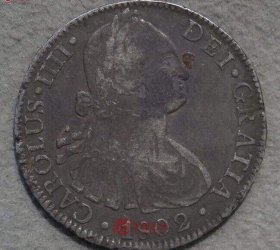
双柱1802年
八品苏州
¥ 800.00
-
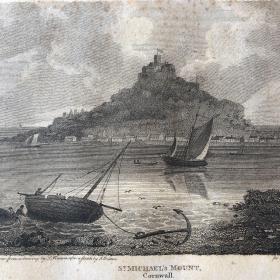
1802年版画原作。。。
九品泰州
¥ 125.00
-

1802年版画原作。。
九品泰州
¥ 125.00
-
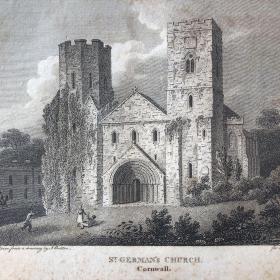
1802年版画原作。。。。。。
九品泰州
¥ 125.00
-
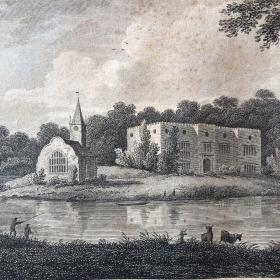
1802年版画原作。。。。。
九品泰州
¥ 125.00
-
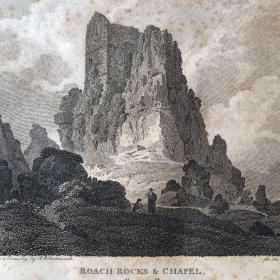
1802年版画原作
九品泰州
¥ 125.00
-
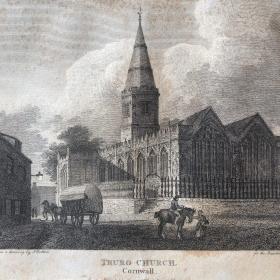
1802年版画原作。。。。
九品泰州
¥ 125.00
-
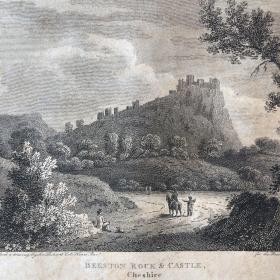
1802年版画原作。。。。。。。
九品泰州
¥ 125.00
-
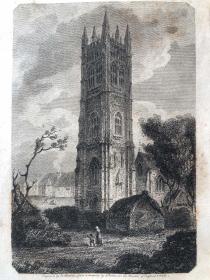
1802年版画原作。
九品泰州
¥ 125.00
— 没有更多了 —












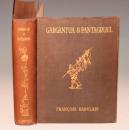
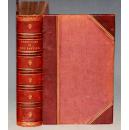

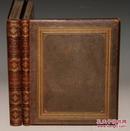

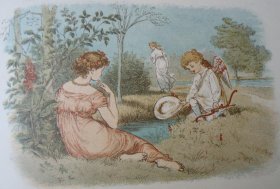
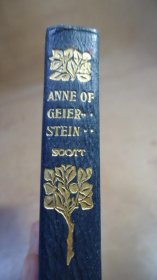

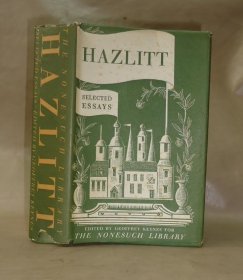
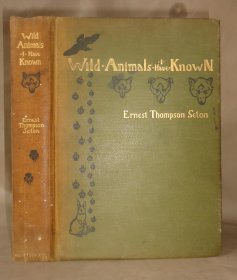
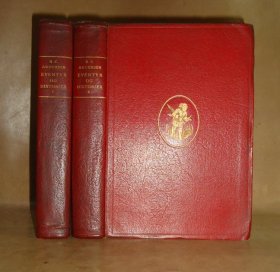
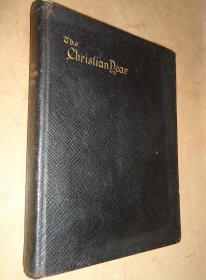
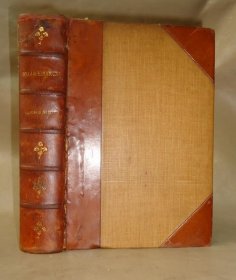
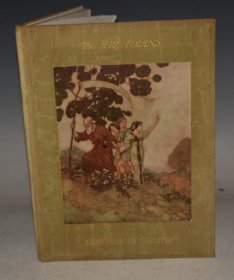

以下为对购买帮助不大的评价